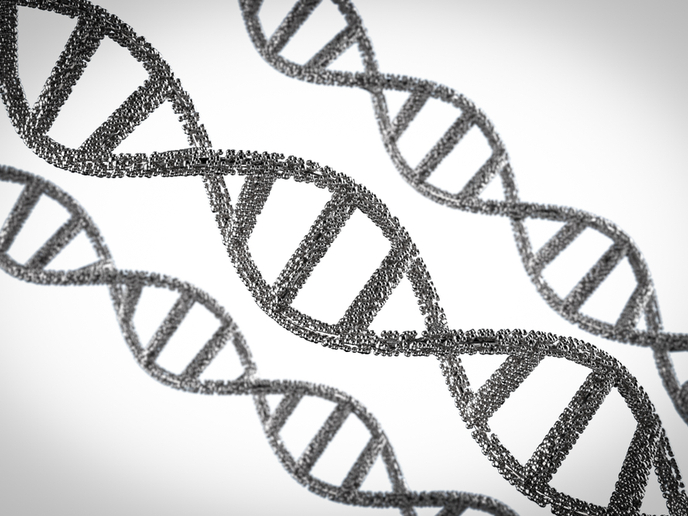New AKU treatment comes closer to commercialisation
The story moved citizens all across Europe: Five years ago, Nick Sireau, a father of two running a charity, finds out that his two sons share a common rare disease called AKU or ‘black-bone disease’. He leaves his job to seek a cure, takes up the position of CEO at a patient research group called the AKU Society founded by a patient called Robert Gregory, and helps obtain over EUR 6 million of EU funding to investigate a drug called nitisinone. At the time, nitisinone was already in use for treating another rare disease and had been found to lower urine homogentisic or HGA – a chemical formed during the breakdown of tyrosine that accumulates in AKU patients and causes serious health complications – by 95 %. Fast-forward to 2018. DevelopAKUre (Clinical Development of Nitisinone for Alkaptonuria), the project investigating nitisinone supported by the AKU Society and coordinated by the Royal Liverpool and Broadgreen University, is close to completing its third study. The project has already successfully determined the appropriate nitisinone dose for AKU patients, confirmed the efficacy of the treatment and found out when ochronosis (the process leading to the morbidity of AKU) begins during the human life cycle. Dr Ranganath Lakshminarayan, project coordinator, discusses its outcomes so far, as well as follow-up plans. How would you explain the current absence of a treatment for AKU? The first reason is historical, due to the delayed onset and lack of appreciation of the severe morbidity at paediatric age: Paediatricians have been slow in their efforts to develop a treatment for AKU. Then, although it was shown to lower urine HGA by 95 %, the first nitisinone interventional study in AKU was declared inconclusive by the FDA – the regulatory body in the USA. This could be due to the small numbers of patients included in the study, the lack of a correct dose of nitisinone in AKU, an incomplete understanding of the natural history of AKU, or the use of a single outcome (lateral rotation of the hip) to decide upon effectiveness. So what makes you think nitisinone is still the way to go, and what makes your approach particularly innovative? DevelopAKUre came at the perfect time. When we kicked off the project, the deficiencies in the earlier nitisinone study had been understood and the design of DevelopAKUre benefitted from other activities: a systematic effort to identify more patients with AKU (we had a pool of more than 500 patients to recruit from); the fact that, besides lowering HGA, nitisinone was also shown to stop or prevent the fundamental process responsible for severe multisystem morbidity (ochronotic pigment formation); the better characterisation of the natural history of AKU thanks to a clinical study we carried out; and the development of a more global and sensitive measurement of the effect of nitisinone called the AKU Severity Score Index or AKUSSI. Moreover, the design of DevelopAKUre incorporated a robust dose response study in AKU, and the very important question of when in the life cycle of an AKU patient should treatment with nitisinone begin was also considered. What would you say have been the most important outcomes of the project so far? The DevelopAKUre project is still ongoing, as one of our three studies will conclude in 2019 after statistical analysis. However, our first study – SONIA 1 (Suitability of Nitisinone In Alkaptonuria 1) – employing nitisinone in a liquid formulation is already completed. Its main conclusion is that an 8 mg dose was most effective as it led to near-normalisation of HGA in all patients. SONIA 1 also helped us understand the pharmacokinetics and pharmacodynamics of nitisinone in AKU for the first time. The metabolic state of AKU before and after nitisinone is now better understood thanks to a 24-hour profiling of tyrosine pathway metabolites, the characterisation of the renal handling of metabolites as well as a quantification of the amount of tyrosine converted daily into ochronotic pigment. Our other completed study is SOFIA (Subclinical Ochronosis Features In Alkaptonuria). SOFIA has shown that ochronosis, the main pathophysiological event in AKU, can be present before the age of 20. Other features of AKU were also found early in life and a follow-up study at paediatric age will soon begin in the UK. This will better inform us on whether nitisinone should be given to patients younger than 16 years old. The longest study – SONIA 2, a four-year nitisinone outcomes study – will complete its clinical phase in January 2019. Data analyses beyond January 2019 will establish whether clinical outcomes have also benefited from nitisinone, paving the way to an application for marketing authorisation. What has been the feedback from the European Medicines Agency so far? One of the most important activities likely to affect the outcome of DevelopAKUre was the pre-study meeting with the EMA. The EMA recognised the importance of HGA as a clinical feature in AKU and supported and enabled our clinical programme. What are your follow-up plans? Once all the data from our studies has been analysed, we will decide whether a marketing authorisation application will be filed or not. Assuming approval by the EMA, this should be followed by national pricing and reimbursement processes.
Countries
United Kingdom



